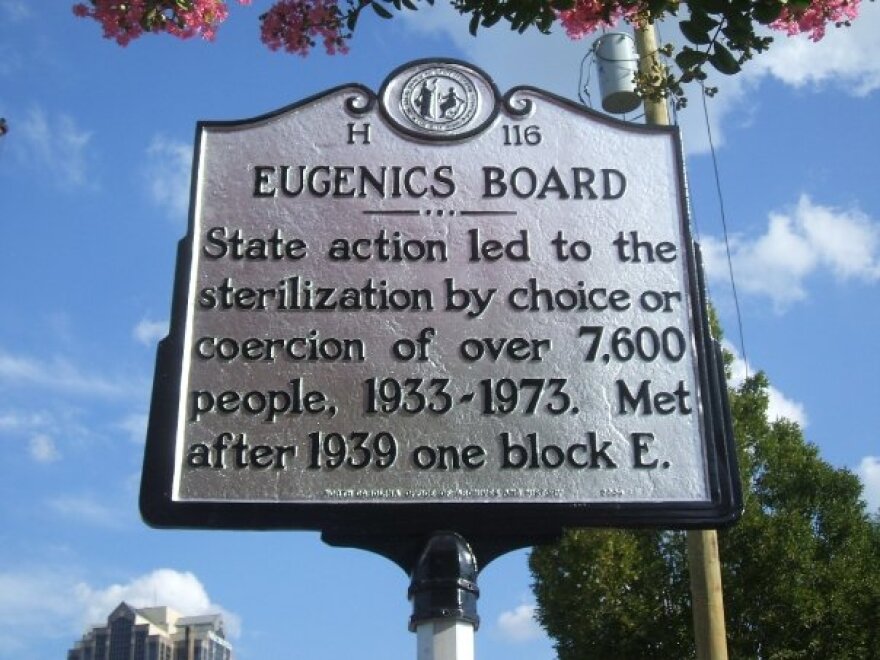Monday marked the last day to apply for victims of state-sanctioned sterilization in North Carolina to apply for compensation. In case this is news to you here are the basic details:
- From 1933 to 1977, the state "Eugenics Board" authorized the forcible and coercive sterilization of people suffering from mental illness and other (loosely termed) "disabilities."
- An estimated 7,600 people were sterilized under the purview of the Eugenics Board. By the end of the program, many were young, African American women. Teenagers.
- Different estimates suggest anywhere from 200 to 1,800 victims are still alive.
- In 2010, the state opened the Office of Justice For Sterilization Victims, which began looking into the deep history, and how victims might be compensated.
- In 2013, the state passed a bill creating a $10 million fund to be split among confirmed living victims of the Eugenics Board objectives.
Despite the efforts, the Office of Justice for Sterilization Victims is coming up against a few scenarios that will inevitably leave some victims without compensation.
Problem 1: Died Too Early
When the state began searching for victims in 2010, many came forward. However, some of these victims were already very old and/or very sick. COO Dee Jones confirmed that some of those people who initially came forward, died before the 2013 compensation law was passed, meaning they and their families will see nothing.
"Definitely there has been a descent population of people who contacted us previously, who passed prior to the June 30th, 2014 deadline," said Jones. "Which is unfortunate."
Problem 2: Sterilized By Someone Else
Both Jones and a lawyer working with sterilization victims to file claims say multiple people were sterilized by departments or groups other than the Eugenics Board. Possibly by county agencies or other departments issuing court orders. These records, because they are not maintained by the Eugenics Board specifically, are not eligible for compensation.
Problem 3: Hard To Find
The reality of these remaining victims is that they are hard to find. Many of them are elderly and were already on the edges of society when they were sterilized. Most suffer from mental disabilities. And the Office of Justice for Sterilization Victims was given almost no money to reach out and find them. They've relied heavily on the media and a shoestring budget to make phone calls and send out mailings to people they could identify through Eugenics Board records. It's also important to note the records may not be entirely accurate, making the victims even less-likely to be located.
If every victim who has currently applied (about 630 as of last week) were approved to receive compensation, each would receive less than $16 thousand. The initial intent was to award victims about $50 thousand, thinking only about 200 would come forward.








